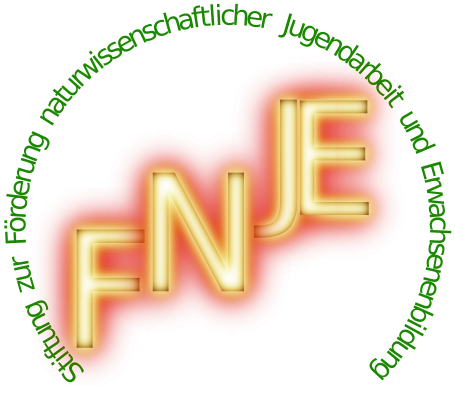Ara: Difference between revisions
No edit summary |
|||
| Line 29: | Line 29: | ||
=== Ptolemy's Almagest === |
=== Ptolemy's Almagest === |
||
{| class="wikitable" |
{| class="wikitable" |
||
|+Θυμιατηρίου ἀστερισμός |
|||
| ⚫ | |||
!id |
!id |
||
!Greek |
!Greek |
||
| Line 38: | Line 38: | ||
|- |
|- |
||
|1 |
|1 |
||
|ὁ τῶν ἐν τῇ βάσει β ὁ βορειότερος |
|||
| ⚫ | |||
|The northernmost of the 2 stars in the base |
|The northernmost of the 2 stars in the base |
||
|σ Ara |
|σ Ara |
||
|- |
|- |
||
|2 |
|2 |
||
|ὁ νοτιώτερος αὐτῶν |
|||
| ⚫ | |||
|The southernmost of them |
|The southernmost of them |
||
|θ Ara |
|θ Ara |
||
|- |
|- |
||
|3 |
|3 |
||
|ὁ ἐν μέσῳ τῷ βωμίσκῳ |
|||
| ⚫ | |||
|The star in the middle of the little altar |
|The star in the middle of the little altar |
||
|α Ara |
|α Ara |
||
|- |
|- |
||
|4 |
|4 |
||
|τῶν ἐν τῷ ἐπιπύρῳ 3’ ὁ βόρειος |
|||
| ⚫ | |||
|The northernmost of the 3 stars in the brazier |
|The northernmost of the 3 stars in the brazier |
||
|ε1 Ara |
|ε1 Ara |
||
|- |
|- |
||
|5 |
|5 |
||
|τῶν λοιπῶν καὶ συνεχῶν β ὁ νοτιώτερος |
|||
| ⚫ | |||
|The southernmost of the other 2 which are close together |
|The southernmost of the other 2 which are close together |
||
|γ Ara |
|γ Ara |
||
|- |
|- |
||
|6 |
|6 |
||
|ὁ βορειότερος αὐτῶν |
|||
| ⚫ | |||
|The northernmost of these [2] |
|The northernmost of these [2] |
||
|β Ara |
|β Ara |
||
|- |
|- |
||
|7 |
|7 |
||
|ὁ ἐπ’ ἄκρου τοῦ καοστῆρος |
|||
| ⚫ | |||
|The star on the end of the burning-apparatus |
|The star on the end of the burning-apparatus |
||
|ζ Ara |
|ζ Ara |
||
| ⚫ | |||
| ⚫ | |||
| ⚫ | |||
| ⚫ | |||
| ⚫ | |||
| ⚫ | |||
|all |
|||
|ἀστέρες ξ, ὧν δ’ μεγέθους ἐ, ε’ β |
|||
| ⚫ | |||
| ⚫ | |||
|} |
|} |
||
{7 stars, 5 of the fourth magnitude, 2 of the fifth} |
{7 stars, 5 of the fourth magnitude, 2 of the fifth} |
||
Revision as of 13:11, 18 April 2025
Ara, The Altar (or Censer), is one of the 88 IAU constellations. The constellation appears in all ancient Greek literature from Aratus to Ptolemy; the ancient Greek term is Θυμιατήριον (Thymiaterion) in Hipparchus and θυτήριον (Thyterion) in Pseudo-Eratosthenes. It forms a unit of sense with the neighbouring super-constellation of Centaurus and Lupus, as the centaur sacrifices the animal to the gods at the altar.
Etymology and History
Aratos only mentions the altar of smoke several times as a sacred site and does not comment on it further, while Eratosthenes explains that it is the altar where the gods once conspired when Zeus went to battle against Cronus. The exact meaning is, therefore, not always clear.
Aratus
- [402] Below the fiery sting of the dread monster, Scorpion, and near the South is hung the Altar [Ara]. Brief is the space thou wilt behold it above the horizon: for it rises over against Arcturus. High runs the path of Arcturus, but sooner passes the Altar to the western sea. But the Altar even beyond aught else hath ancient Night, weeping the woe of men, set to be a mighty sing of storm at sea.
- [710] When the latter [Ram] rises, the Altar is seen setting in the West, while in the East may be seen rising as much as the head and shoulders of Perseus.
Reference:
English translation by Douglas Kidd (1997). Aratus: Phaenomena, Cambridge Classical Texts and Commentaries, Series Number 34
(Pseudo-)Eratosthenes
Var. 1. It is the one on which the gods originally sealed their alliance their alliance by an oath when Zeus launched his his offensive against Cronos. When they had succeeded in their endeavour, the gods also placed the altar in the sky as a memorial; men also carry the altar the altar at their banquets and sacrifice on it, when they have decided to make an agreement between themselves under oath; they touch it with their right hand, believing that this gesture is a guarantee of their good faith.
The Altar has two stars on the hearth and two on the base. In all, four.
Var. 2: It is the one on which the gods originally sealed their alliance with an oath when Zeus launched against Cronos; the Cyclops had built this edifice and covered the fire so that no one had the power of the lightning. When they succeeded in their enterprise, the gods also placed this altar in the sky as well; men also carry the altar to their banquets and sacrifice on it when they have decided to make an agreement between themselves, as well as at competitions, for those who want to take an oath, believing it to be the surest legal guarantee. They touch it with their right hand, considering it as a sign of good faith. Diviners also sacrifice on this altar when they want to ‘see’ with greater certainty.
It has two stars on the hearth and two at the base. base. Four in all.
English from French:
French translation by: Jordi Pàmias i Massana and Arnaud Zucker (2013). Ératosthènes de Cyrène – Catastérismes, Les Belles Lettres, Paris, 114-116
Hipparchus
Ptolemy's Almagest
| id | Greek
(Heiberg 1898) |
English
(Toomer 1984) |
ident. |
|---|---|---|---|
| 1 | ὁ τῶν ἐν τῇ βάσει β ὁ βορειότερος | The northernmost of the 2 stars in the base | σ Ara |
| 2 | ὁ νοτιώτερος αὐτῶν | The southernmost of them | θ Ara |
| 3 | ὁ ἐν μέσῳ τῷ βωμίσκῳ | The star in the middle of the little altar | α Ara |
| 4 | τῶν ἐν τῷ ἐπιπύρῳ 3’ ὁ βόρειος | The northernmost of the 3 stars in the brazier | ε1 Ara |
| 5 | τῶν λοιπῶν καὶ συνεχῶν β ὁ νοτιώτερος | The southernmost of the other 2 which are close together | γ Ara |
| 6 | ὁ βορειότερος αὐτῶν | The northernmost of these [2] | β Ara |
| 7 | ὁ ἐπ’ ἄκρου τοῦ καοστῆρος | The star on the end of the burning-apparatus | ζ Ara |
| all | ἀστέρες ξ, ὧν δ’ μεγέθους ἐ, ε’ β |
{7 stars, 5 of the fourth magnitude, 2 of the fifth}
Origin of Constellation
The constellation has no Babylonian predecessors but appears to originate from Greek archaic times. The neighbouring depiction of a sacrificial animal in our constellation Lupus, the extreme southern position of the constellation, its diminutive size compared to its immense ritual significance and its illogical upside-down reversal (at least in Ptolemy) lead to the hypothesis that it could have been larger in earlier times and could have enclosed the sting of the scorpion (or parts of it). The scorpion eventually came to Greece from Babylonian astronomy via the zodiac, and there are no complete celestial descriptions from before that time. We, therefore, need to find out whether another culture may also have seen parts of the altar here. The area near the sting of the scorpion is streaked with light and dark clouds of the Milky Way, and the dark clouds of the Milky Way could be the smoke of an altar illuminated by the fire below.
Some researchers suggest that the figure of a smoky altar only becomes vivid when more southerly stars are added, which were visible at that time due to precession. This is unnecessary. Human imagination is of no use in reconstructing constellations; we need data. We can speculate a lot about the constellations of the archaic civilisation, as no scientific data has survived from this period that would enable a correct reconstruction.
Transfer and Transformation of the Constellation
Eratosthenes describes an altar of four stars (two on the brazier and two on the base, a cylinder), while Ptolemy mentions seven. This demonstrates obviously that the constellation was imagined differently by these two (and probably also other) authors.
Greek Mythology
Greek mythology recalls the god Kronos, who overthrew his father, Uranos, to gain power. He was prophesied by an oracle that he himself would therefore also be overthrown by one of his sons and to thwart this he devoured all his children immediately after birth. At some point, his wife, the goddess Rhea, could no longer bear to see this and rescued a baby to raise him on Crete with a goat's milk. It was Zeus. When he grew up, he forced his father to spit out his siblings, and together, they began a battle for world domination. The archaic goddess of the earth, Gaia, advised them to unleash some of the monsters that Kronos had imprisoned. So Zeus released the brutal Cyclopes and Centaurs, who forged weapons for him and his siblings and, according to Eratosthenes, also made ‘a cover for the fire’ so that the gods would not have to see its powerful glow. This was the altar that initially served the gods around Zeus as an oath of their covenant and from then on also served humans.
Whenever people swear, take oaths or seal covenants, they do so at such an altar ‘as an impartial guarantor’. They place their right hand on the altar to express their goodwill and to seal something.
Eratosthenes reports that such an altar is also used by fortune-tellers for their sacrifices so that their predictions of the future are more accurate.








